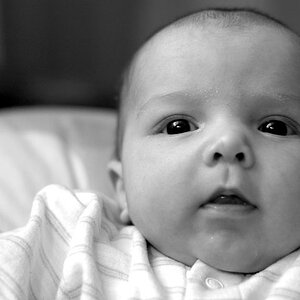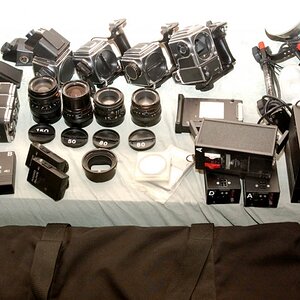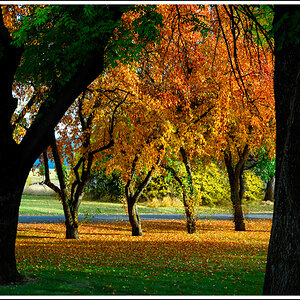Jon_Are
TPF Noob!
- Joined
- May 12, 2007
- Messages
- 655
- Reaction score
- 13
- Can others edit my Photos
- Photos NOT OK to edit
I've been experimenting with indoor HDR, trying to capture the full dynamic range of a room without flash. I've run into some trouble, though, shooting rooms with windows on a relatively sunny day.
I find I'm not able to create a nicely-exposed image using just three bracketed exposures (+/- 2 EV). Because this is the limit of what my D80 will bracket, I've concluded that many of my HDRs will require 5 or more images.
So, I guess I have to capture my first three shots, then adjust the shutter speed without moving the camera even a hair, and shoot another set.
My question: Is this do-able? (I know I should just try it, and I will tomorrow, but I'd like to hear some input from y'all.)
I use LR2 and Photomatix. Is Photomatix pretty good at lining up the images if they're not quite perfectly aligned?
Thanks!
Jon
I find I'm not able to create a nicely-exposed image using just three bracketed exposures (+/- 2 EV). Because this is the limit of what my D80 will bracket, I've concluded that many of my HDRs will require 5 or more images.
So, I guess I have to capture my first three shots, then adjust the shutter speed without moving the camera even a hair, and shoot another set.
My question: Is this do-able? (I know I should just try it, and I will tomorrow, but I'd like to hear some input from y'all.)
I use LR2 and Photomatix. Is Photomatix pretty good at lining up the images if they're not quite perfectly aligned?
Thanks!
Jon







![[No title]](/data/xfmg/thumbnail/39/39438-1eb8b5f82b59d9d0c72ae9025778ed4c.jpg?1619739032)
![[No title]](/data/xfmg/thumbnail/35/35932-28690c4fc247cf491230e47fc70ebeb5.jpg?1619737235)

![[No title]](/data/xfmg/thumbnail/35/35929-8650428697cfb142a7b9a4e8ef731178.jpg?1619737232)


![[No title]](/data/xfmg/thumbnail/41/41898-2c70795ddfa6b397714acc28e3e5d36f.jpg?1619739936)
![[No title]](/data/xfmg/thumbnail/39/39439-d0a6beaaf39993860b74ccbd81fdd122.jpg?1619739032)

![[No title]](/data/xfmg/thumbnail/33/33343-857a08c1327857172779bfe49f06f638.jpg?1619735911)